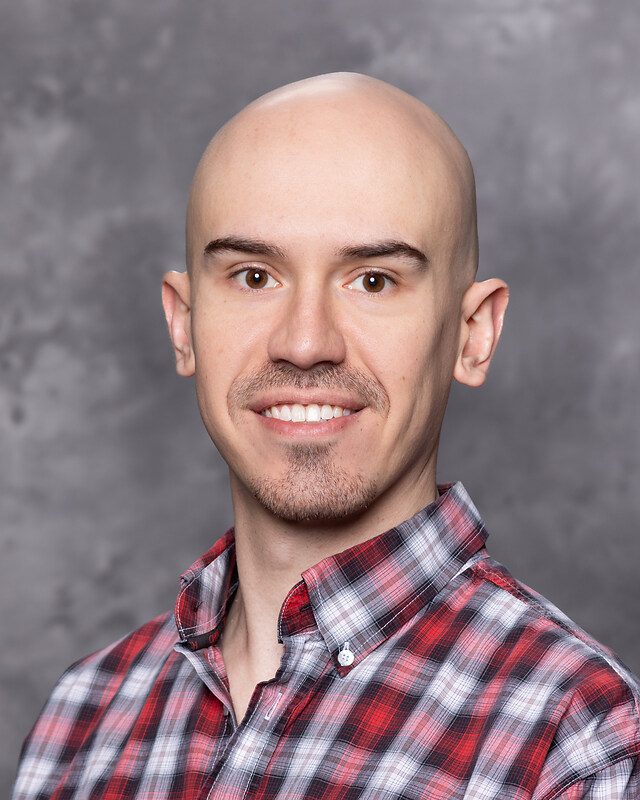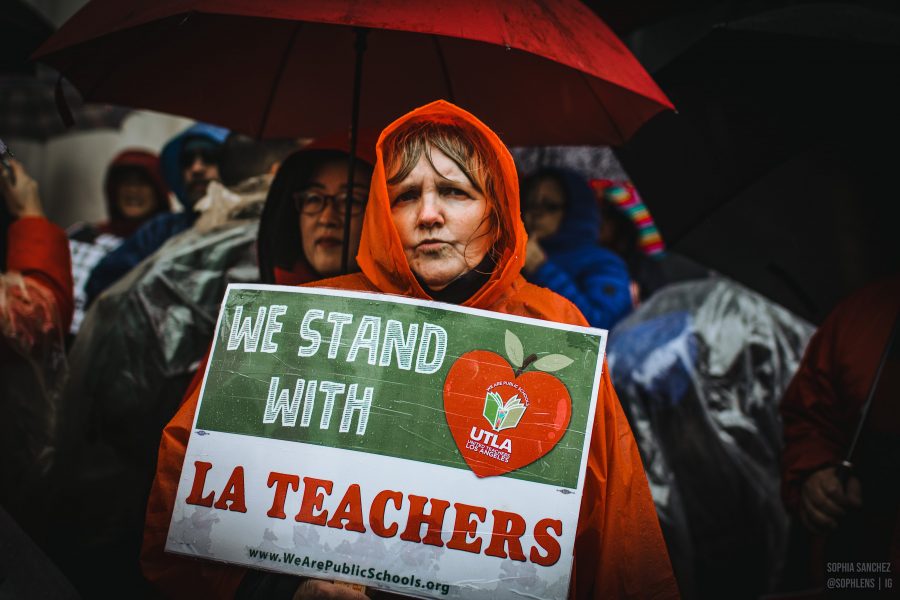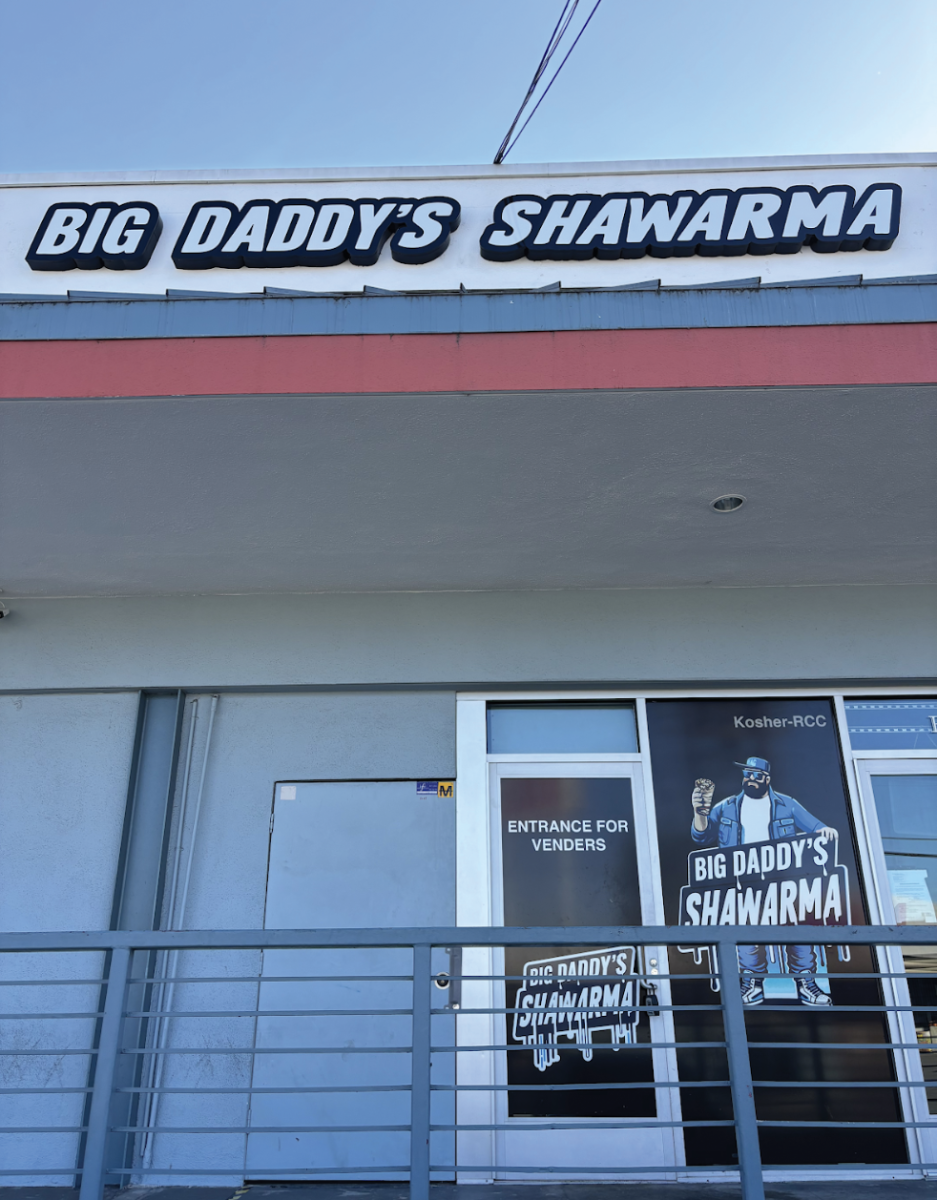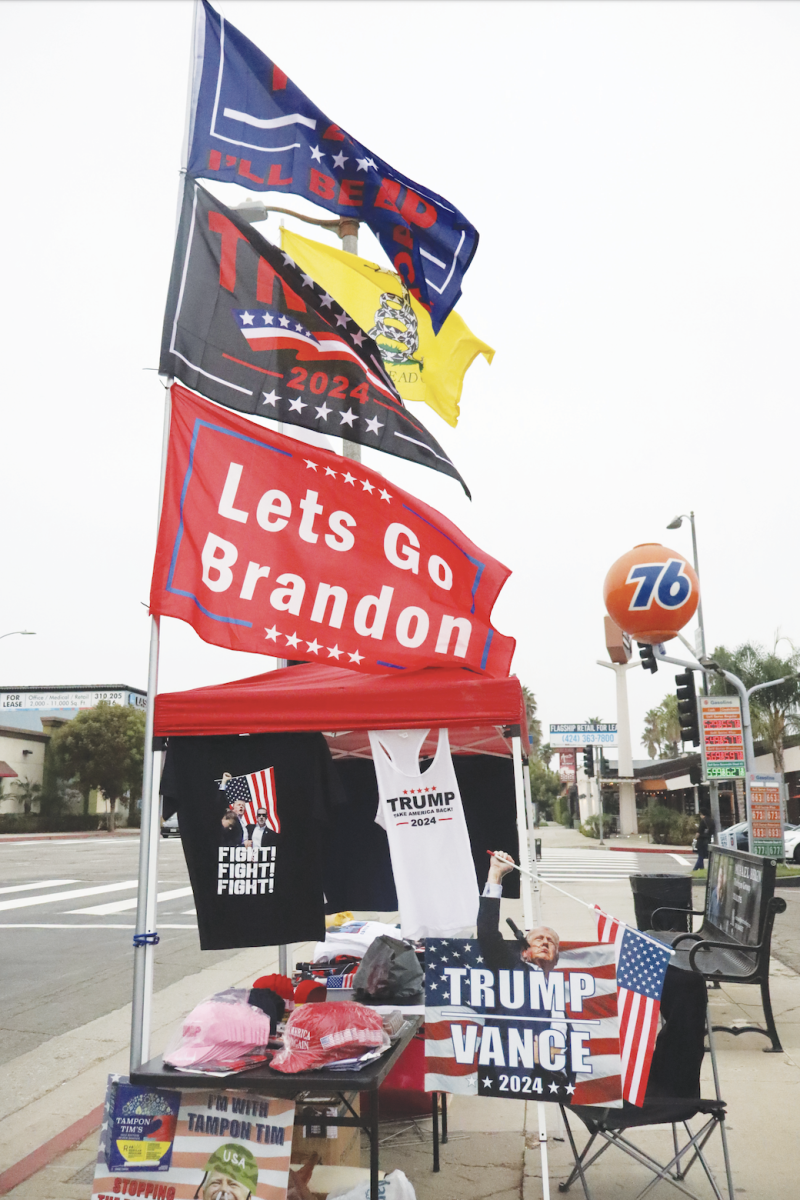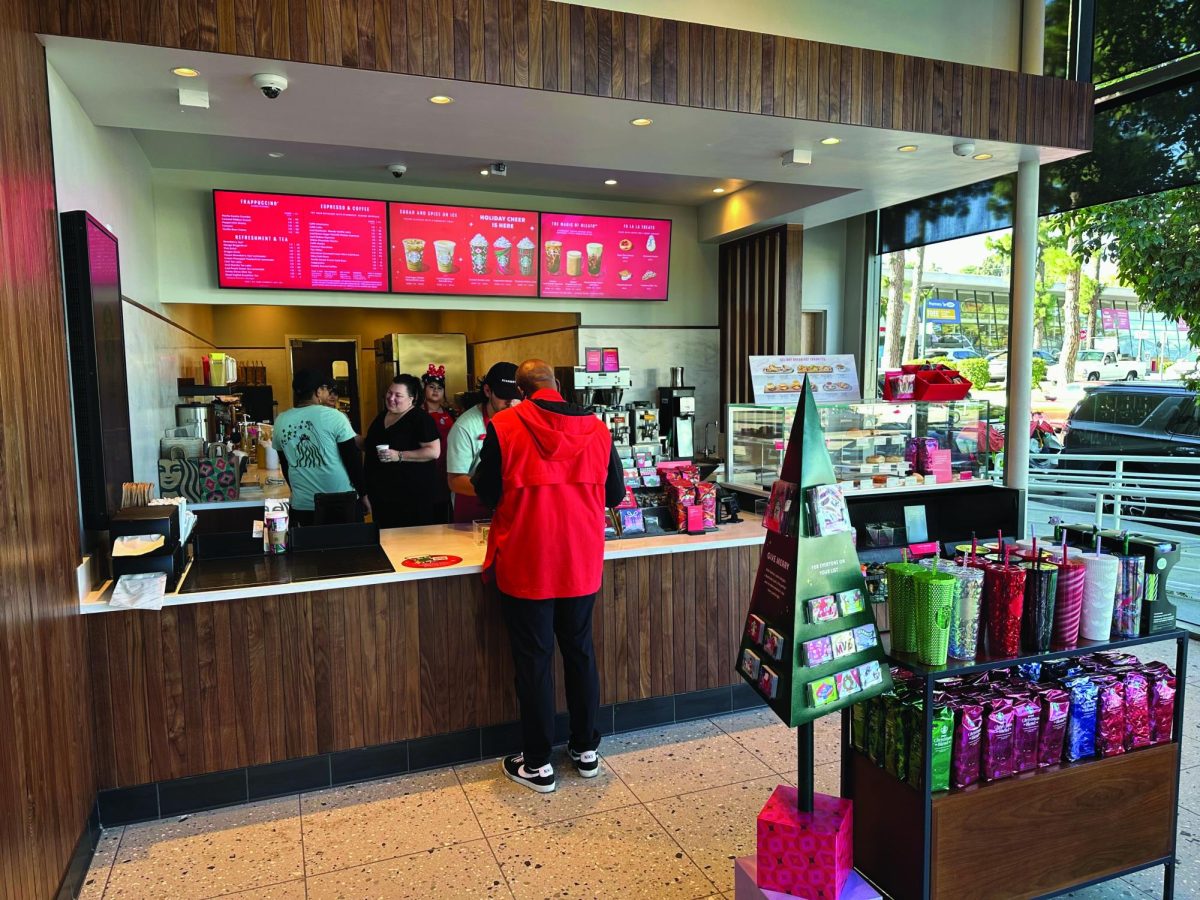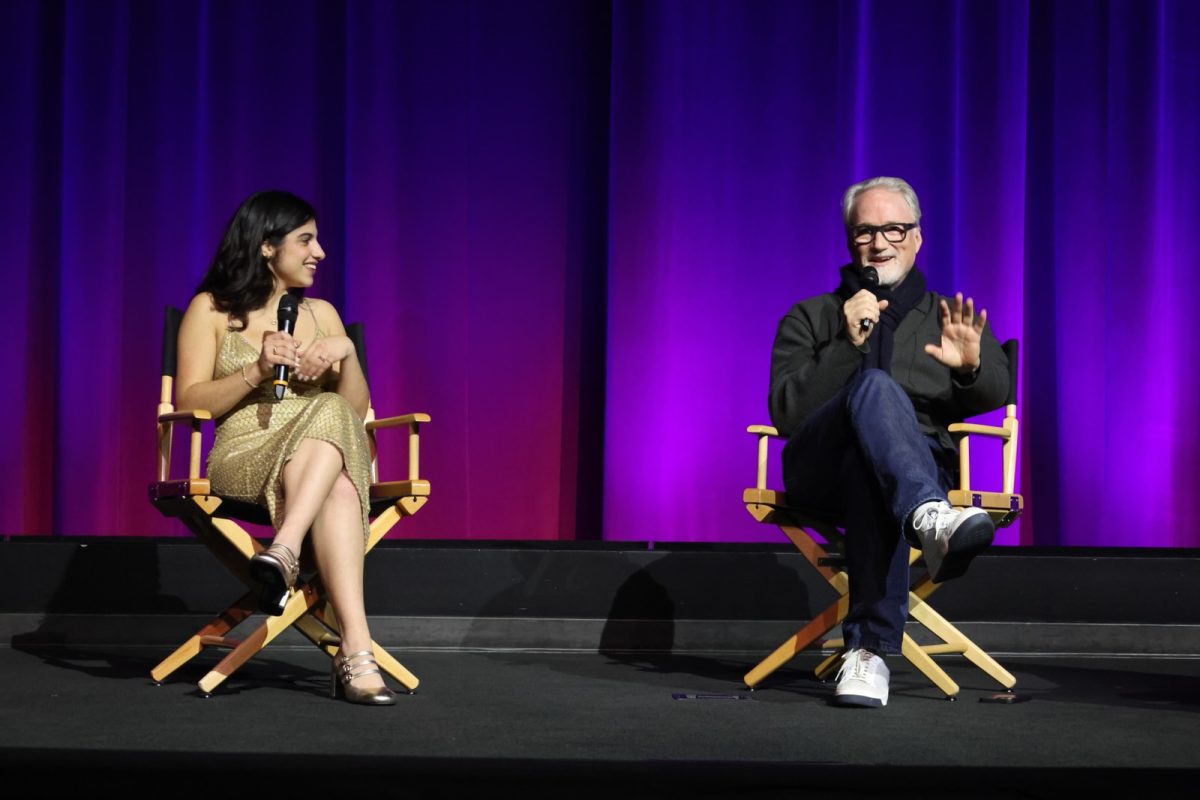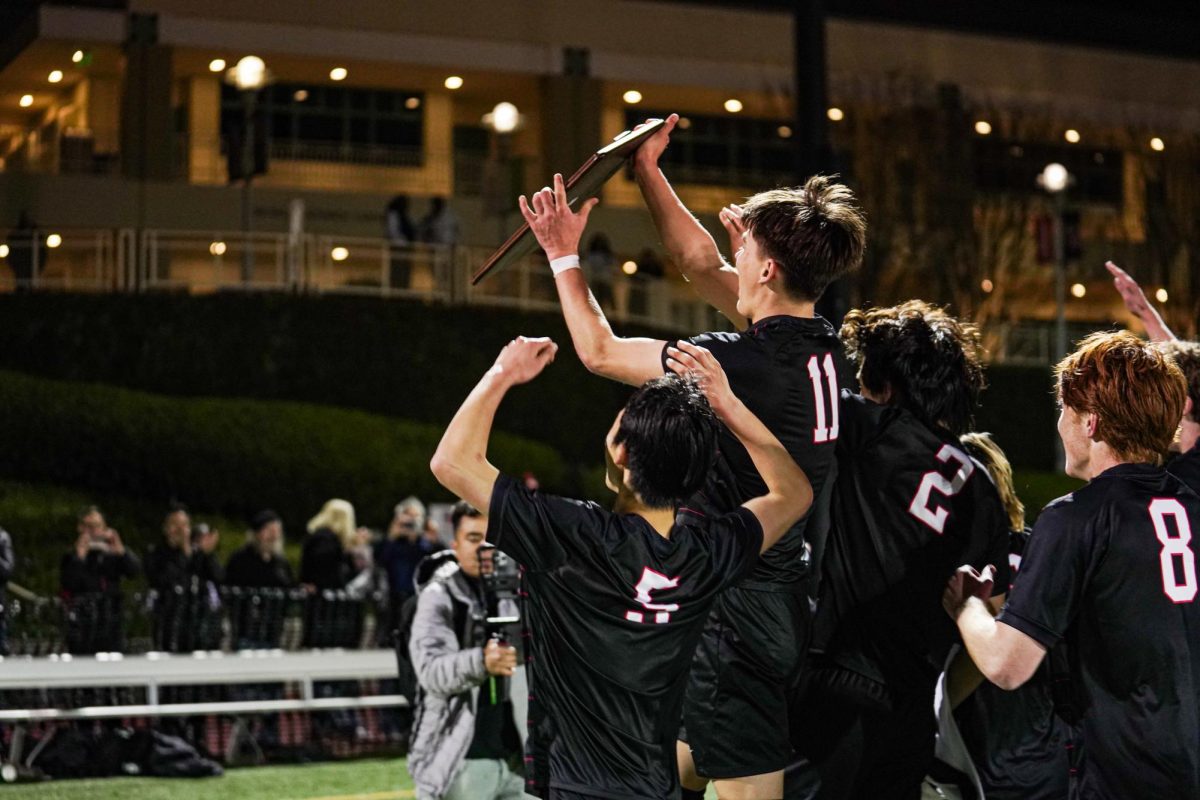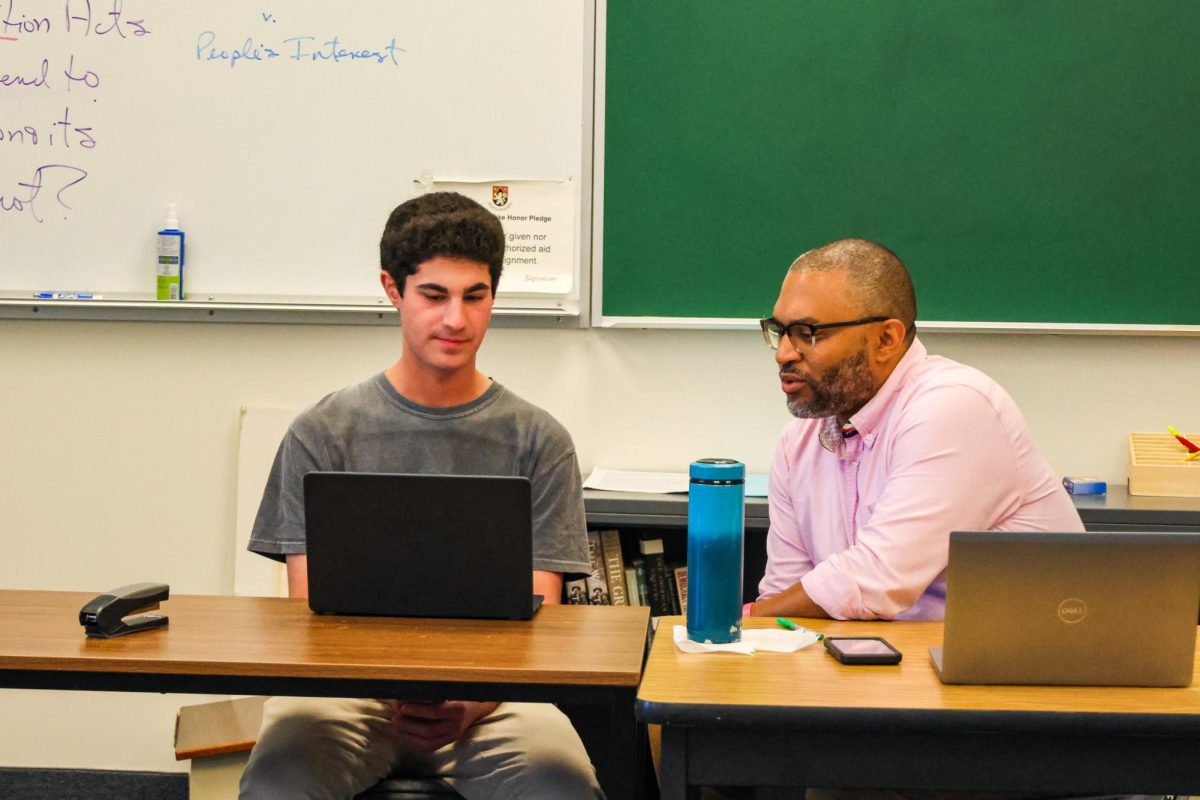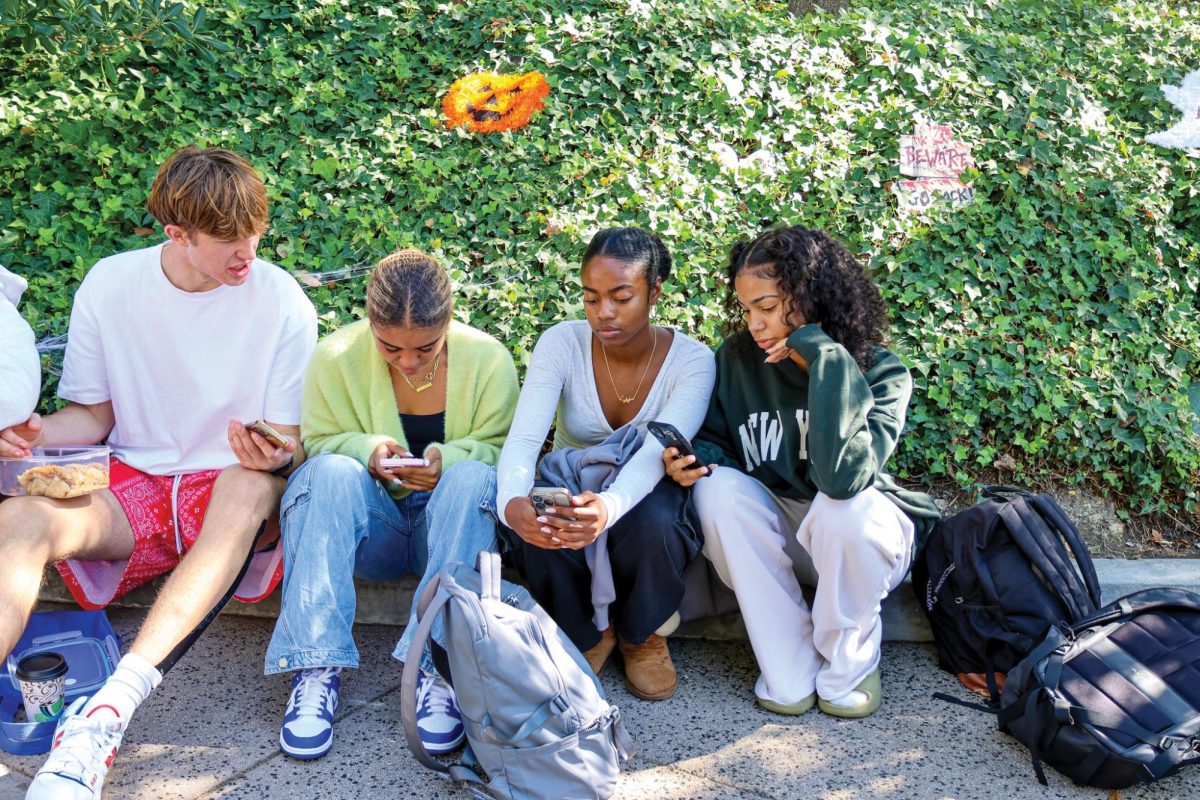The streets were a sea of red.
As Aaron Rovinsky (University High School ’19) maneuvered his car down crowded boulevards in downtown Los Angeles, he watched as streams of teachers, students and parents marched toward the Los Angeles Unified School District Board headquarters.
Sporting scarlet ponchos and clasping colorful umbrellas, the protesters extended for tens of blocks, the growing mass growing more animated as the downpour quickened. As children delicately picked their way around puddles and teachers brandished signs declaring “FIGHTING FOR OUR STUDENTS,” Rovinsky felt hopeful despite the murky skies above.
“Although students are out of school and not learning in class during the strike, we get to fight alongside our teachers for present and future generations of students to have an overall better education,” Rovinsky said. “Teachers deserve the right to strike because they literally dedicate their lives to helping students grow into educated adults; they’ve given so much of their time to us, the students, so we should respect what they have to say and stand up with them for what they believe in.”
Over 30,000 teachers went on strike early Monday morning after 21 months of failed negotiations with the Los Angeles Unified School District, CBSLA reported. The district, which is the second-largest in the nation, has not experienced a strike in last three decades.
The union the picketers belong to, United Teachers Los Angeles, which represents 34,000 educators, wants high salaries, smaller class sizes and more nurses, counselors and librarians, according to the Los Angeles Times. Brent Smiley, who teaches history and English and Sherman Oaks Center for Enriched Studies, said he and his colleagues are protesting unfit teaching and learning conditions.
“It isn’t about money in our pocket,” Smiley said. “It really is now fighting the fight for what’s right and education.”
When UTLA negotiated into teachers’ contracts class size caps 10 years ago, limiting classes to 34 or 37 students depending on the school, Smiley said the district included a clause which allowed it to waive those caps during “dire financial emergencies.” Teachers wish to amend this part of the contact, known as Section 1.5, to allow the district to wave class size caps bilaterally, not unilaterally, Smiley said.
History teacher and football coach Conrad Cuda, who taught public schools in the Santa Monica-Malibu Unified School District for 15 years, said that issues like large class sizes were one of the reasons he decided to come to Harvard-Westlake.
“Of all things that I’ve enjoyed about starting to work here is the personal relationship that students have with teachers,coaches, administrators and everybody else on campus,” Cuda said. “And I have to say that was sorely lacking in my experience, especially the last several years at Santa Monica High School. Every year you felt like you got a little further and further away from really knowing your students. And obviously, if you don’t know them then it’s really hard to teach them, to help them.”
Smiley also said teachers wish to have more honest conversations about the allocation of funding, such as resolving the issue that LAUSD only pays for nurses to come to schools only one day a week. The Washington Post reported that UTLA also wants a reduction in standardized testing, an expansion of community schools and a 6.5 percent pay raise.
Cuda, however, said that he doesn’t think the teachers are on strike due to just issues of salary.
“Teachers don’t typically go into teaching for the money,” Cuda said. “They go into they see a value in what they’re doing and they want to give back to the community. And that’s what motivates you and what causes you make a decision about what you want to do. But when you just find that just because of the structure of the school, class sizes, lack of resources, the issues of not having enough subs to be able to cover all of the classes [and] those kinds of things, it’s just difficult. And it breaks your heart every day to a point where you either say we’re going to stop coming and we’re going to try and make things better here, or sadly you move on and go find somewhere that that does things differently – like I did in coming here.”
Similarly, Smiley said that teachers are more concerned about the wellbeing of their students, and making sure they have the right resources. According to Smiley, sometimes school counselors are responsible to up to 750 students each.
“That’s not doing anybody any good at all,” Smiley said. “We need to reduce the case load on the counselors taking the kids. In my career, I’ve had to visit too many kids in 72-hour lock up. And I’ve gone to them because I’m the teacher and what else am I going to do? But we can give them the counseling services before we get to that point.”
Most significantly, Smiley said that the strike represents the division between educators and “reformers,” including LAUSD Superintendent Austin Beutner (Michael ’14), whom Smiley said wants to run the school district like a corporation.
This “fundamental fight,” as Smiley described it, has been growing since Beutner’s predecessor, former Superintendent John Deasy, tried to introduce iPads into schools in 2013, according to Time. The failed project revealed opposing visions for the future of education, Smiley said.
“Our attitude is when you think back about your education, you don’t think back to the program that you learn the most from, you think back to the teacher you learn most from,” Smiley said. “The idea that kids just sitting there working their way through a device can give them a quality education is ridiculous. On any given day I see up to 210 kids and I got 210 problems that I have to solve everyday. Not problems as in they give me a hard time, but a problem that has to be solved: how do I teach that kid today? Because that one had a fight with their mom getting out of the car; the other one is breaking up with her boyfriend; the other one is got his head in the soccer game that’s going to be after school. I mean how do I get each of these kids [engaged] and a device ain’t going to do it.”
Smiley said that while teachers drove to work, nearly all 34,000 left their classrooms and drove to LAUSD headquarters to protest, causing the district to bring in substitutes to teach the 600,000 LAUSD students. But even though schools were kept open despite the strike, Sean* (Northridge Academy High School ’21) said he decided not to attend class to support his teachers.
“I believe that the teachers – and the students and parent protesting with them – are doing the right thing,” said. “They aren’t just fighting for better pay, they are fighting for better education – for example, funding arts and humanities programs, updated books and technology, real-world-applicable classes or programs, etc. School should prepare you for life, not a final exam.”
In fact, only a third of the students went to school on the first day of the strike, according to the Los Angeles Times, which has already cost the district $25 million as schools receive state funding based on students’ attendance.
Despite the damages and Beutner’s desire for a resolution, according to KTLA, supporters say the cost of the strike is worth the potential benefits.
“I am absolutely 100 percent behind them because of what teachers are doing for our children,” Mary,* whose child attends a school within the LAUSD, said. “And also it’s sad that they aren’t getting what they deserve. Although even if [students] get affected, it doesn’t bother me.”
Smiley, whose own daughter joined him picketing, said that he heard students were watching movies or playing games. He told his students before the strike that he will not collect any work he did not assign himself and will not penalize the students for not attending school. Smiley, however, said he was not allowed to discuss the pending strike with his students, so he revealed information only when they asked him questions.
Rovinsky said there wasn’t an instructional point in him going to school, and that he utilized the day to join the strike downtown and support his educators.
“The strike has definitely changed my perception of public school teachers,” Rovinsky said. “The majority of the demands UTLA has outlined pertain to improving schools for the students, and it’s so incredible and heartwarming that teachers are putting their jobs on the line to try to help the students they already dedicate so much of their time to. I think that a lot of students, myself included, take for granted the amount of work that teachers put in, and the strike definitely puts the passion public school teachers have for their students into perspective for me.”
Smiley, who worked at Lawrence Middle School for 20 years and is at his first year at Sherman Oaks CES, said he hopes students realize that historic moments can exist beyond the pages of their textbooks. For the last 15 years, Smiley took students with him to presidential inaugurations, and most recently, the Women’s March.
“You have to be willing to get in and experience these things firsthand,” Smiley said. “Those are the memories that you really last. So I’m a firm believer in the idea that you experience history firsthand. You don’t always know where and when history is going to take place, but every now and then an event occurs that you know is going to happen and you immerse yourself into that.”
Rovinsky looked at the rain-splattered protesters again.
As he watched more red-clad teachers and students flood the road before him, he honked his car.
And despite the heavy coats, thick layers of glass and pouring rain between them, they heard Rovinsky.
Like a thunderous wave, they cheered back.
*Names have been changed
















